Spicebush Swallowtail (Papilio troilus)
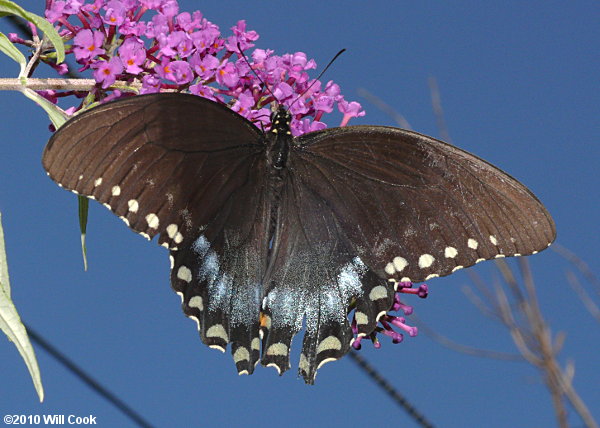
Common throughout NC, Spicebush Swallowtails are similar to the other dark swallowtails, but can be quickly identified, even in flight, by the series of pale blue half-moons near the trailing edge of the hindwings. This one is a bit worn, missing its tails.
Carroll Co., VA 7/24/10.
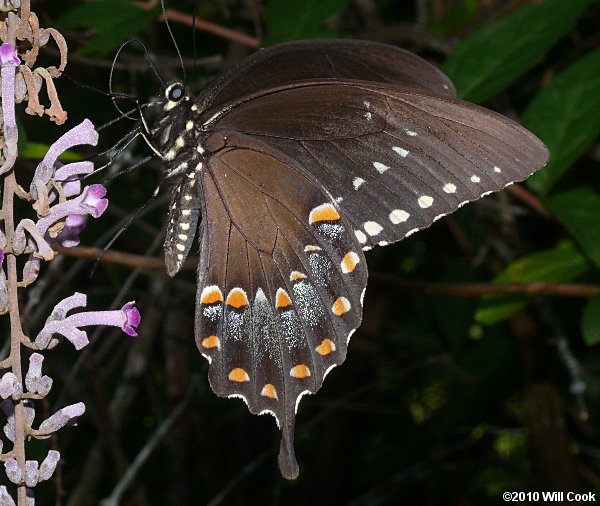
The undersides are also similar to other dark swallowtails, with two bands of orange spots like dark form Eastern Tiger Swallotail, but unlike Pipevine Swallowtail, which has one. The thing to look for is on the inside band — the third spot is replaced by a blue dash. This is much easier to see from a photo than when the butterfly is on the wing!
Carroll Co., VA 7/24/10.
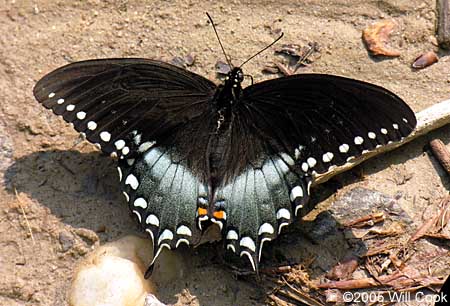
Haywood Co., NC 5/13/05.
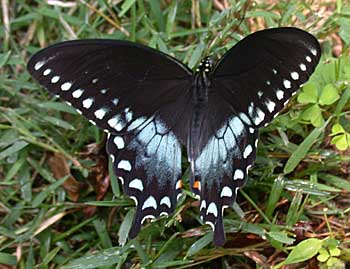
Carroll Co., VA 7/22/02
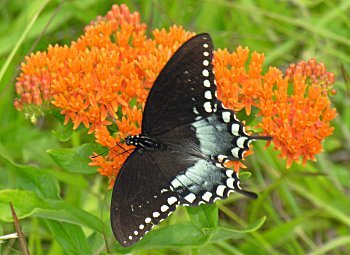
Person Co., NC 6/13/06.
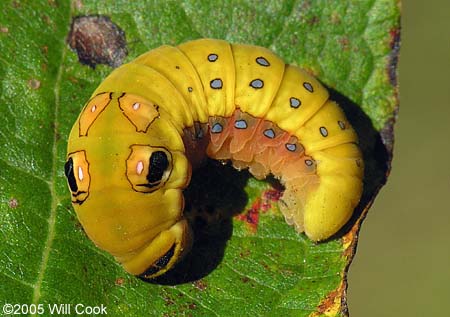
Two large false eyespots give Spicebush caterpillars a comical appearance. Their main host plants are Sassafras (Sassafras albidum) and Spicebush (Lindera benzoin). The unfortunate caterpillar at left had fallen out of a Sassafras tree onto my car. I placed it on a Sassafras leaf for this photo.
Carroll Co., VA 10/16/05.
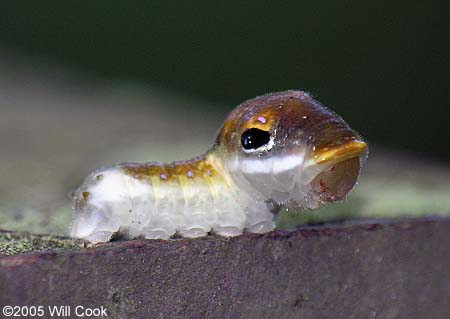
This early instar caterpillar looks like a bird dropping with a salamander's head.
Carroll Co., VA 8/13/05.
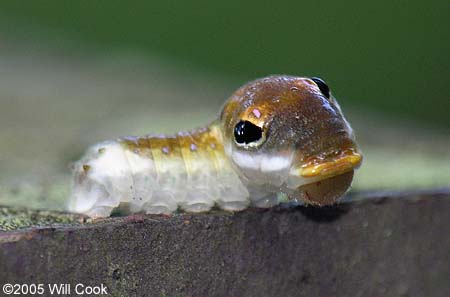
Same individual.
Carroll Co., VA 8/13/05.